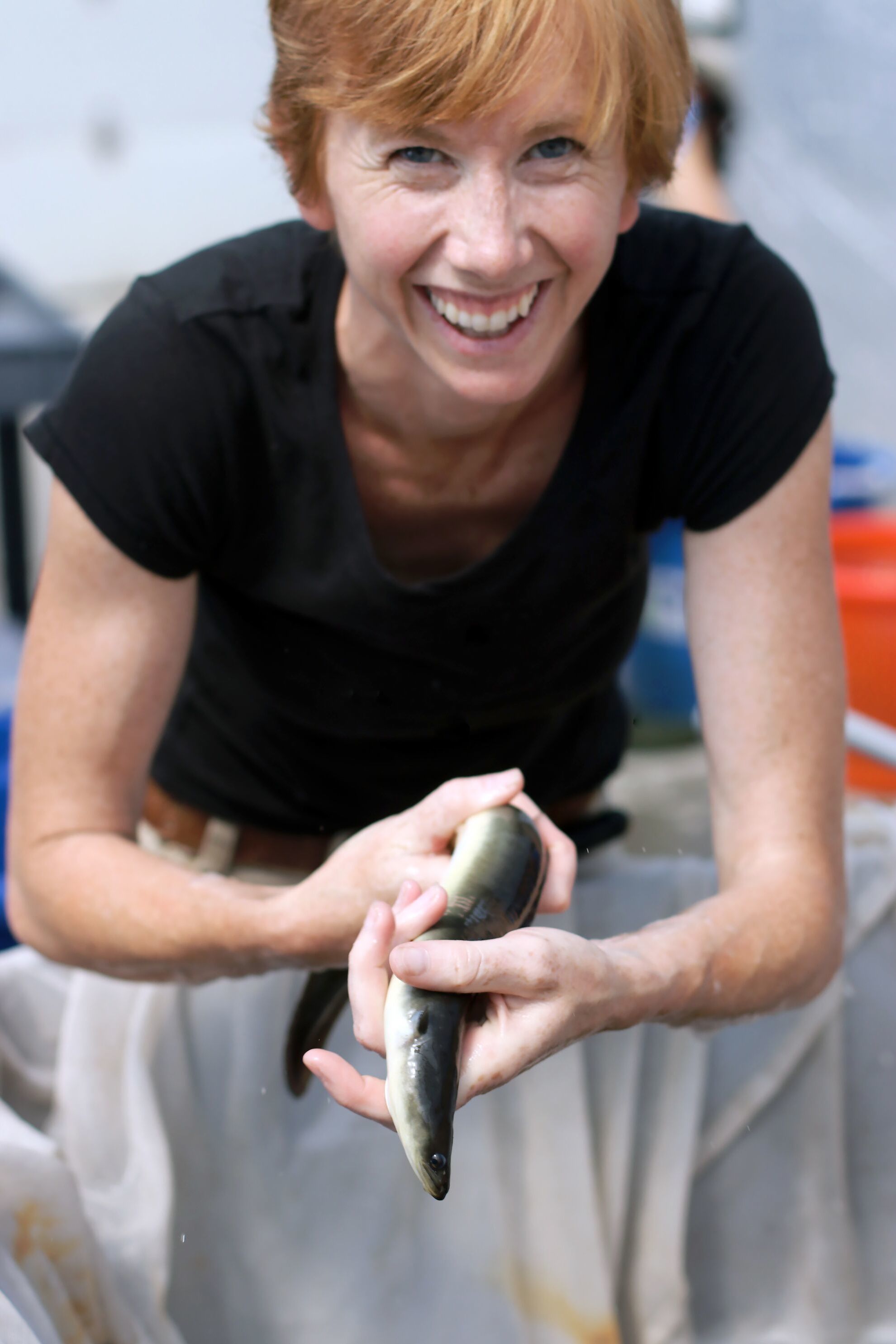Unagi Eel at American Unagi

American Unagi owner, Sara Rademaker, founder of American Unagi, was tired of seeing imported low-quality unagi (eel) in sushi restaurants, so in 2014 she started growing eels in the basement of her Maine home with the hopes of producing a more accountable, sustainable, and delicious US-grown product. She’s since moved out of her basement, expanded her facility several times, and can’t keep up with the demand from local sushi restaurants! Sara has worked in the aquaculture industry for nearly 20 years and was a noted speaker at the 2019 FISH 2.0 competition for young seafood entrepreneurs to compete for seed funding. In addition to live sales, Sara and her team are currently expanding their product line by offering both fresh and frozen European-style smoked eel and butterflied fillets directly to consumers online.
Today’s Farmed Fish caught up with Sara’s whirlwind schedule to talk with her about her savvy unagi practices.
Today’s Farmed Fish [TFF]: Tell us how you raise your fish and its history.
American Unagi [AU]: American Unagi raises American Eels (Anguilla rostrata). Our growing process starts with locally wild-caught juvenile or glass eels (also known as elvers) in Maine that are raised to market size in land-based recirculating aquaculture systems (RAS). Eel aquaculture has a long history, with records dating back to the 1300s when eels were very commonly grown in open water lagoons in countries such as Italy. Starting in the 1970s, northern Europeans began growing eels in captivity on land with RAS methods. By the 1980s these engineered systems quickly became the preferred method of eel aquaculture, given its ability to produce at high density in a completely controlled environment. The Netherlands, Denmark, and Germany led this commercialization wave in the early 1980s.
TFF: How did you first get into aquaculture?
AU: I have been working with aquaculture for nearly 20 years. I really dove into aquaculture at Auburn University and it has taken me all over the world since then! For the last decade I have been working either in the US or Africa with aquaculture production, education, or research and development with species ranging from microalgae to tilapia. It’s been an amazing and constantly challenging career. I love it.
TFF: What are some of American Unagi’s notable practices you are most proud of and why?
AU: I am really proud of growing a Maine business that connects traditional seasonal fisheries to year-round aquaculture production. Growing our American eels domestically brings US jobs and, just as importantly, produces a safer, higher quality product. I am also proud of our farm's approach to growing fish. and Fundamental to our practices is having a tremendous amount of respect for our eels which in turn carries through to producing a great product.
TFF: How has the aquaculture industry changed to bring better products to consumers over the last decade?
AU: The diversity of responsibly-raised seafood products has really grown over the last decade, so consumers now have more products to choose from, which is great as they’ve become more educated and adventurous seafood eaters.
TFF: How do you want to see the aquaculture industry move forward?
AU: I’d love to see the US take a lead in aquaculture production – with more investment, regulatory support, and consumer buy-in, we could really see the US ranking move up. Honestly, the progress in these three areas has been fantastic over the last 5 years. Everything takes some time, change too quick has it’s on challenges, so overall I am pleased with the speed of developments and successes we are seeing.
TFF: How do you think your practices compare to raising livestock?
AU: Seafood is the most efficient animal protein you can grow! Feed conversation ratio is a big part of that efficiency. On average seafood takes as little as 1 lb of feed to produce 1 lb of meat (1:1). Land-animals such as cows, pigs, and chicken ranges from as high as. 10:1 to 3:1. Eels average their feed conversion at about 1.4. When you step back and consider resources such as land, water, and fuel the footprint of seafood is often much smaller than other animal proteins. Seafood as a whole has less negative environmental impacts and in some cases like oysters and seaweed can even have a net positive impact!
TFF: From which aquaculture producers would you gladly eat their farmed fish?
AU: Much like US fishermen, US aquaculture farms are held to really high standards of regulation and oversight, so I always feel good eating and supporting domestically-grown products.
TFF: What is your favorite farmed fish dish? How do you like it to be cooked?
AU: Eel! Eels are a rich, tasty fish with super high levels of Vitamin D and A. Hot smoked eel is fabulous – one of the most satisfying fish I have ever eaten.
TFF: Where can consumers find your product?
AU: www.americanunagi.com/store. You can find our product online and in select restaurants across the US. We are growing business, so look for our brand as we expand to the West Coast in the next year. Because we are currently the only US producer of farm-raised eels, just ask if the eel is farmed in the US and that will tell you whether it’s American Unagi!
TFF: What resources do you recommend for consumers to do more of their own research?
AU: We are based on the East Coast, so my trusted sources for reputable information about aquaculture are Gulf of Maine Research Institute, the Downeast Institute, and the Maine Aquaculture Association. For a broader scope on the industry, Aquaculture North American and the Global Aquaculture Alliance are great resources.